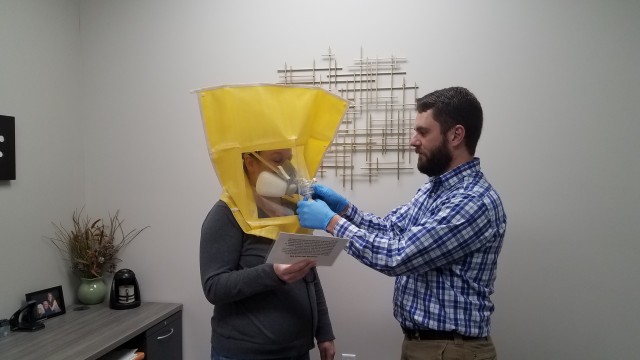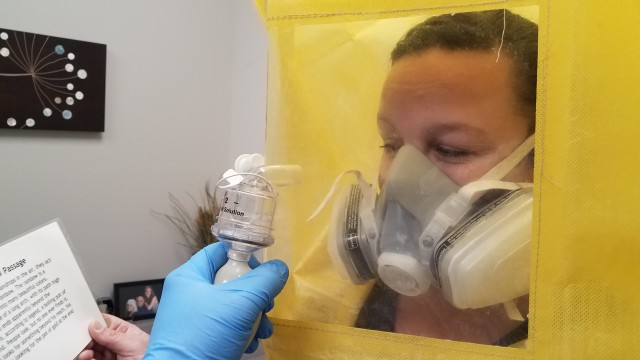Respirators and COVID-19 in the workpalce
Several million workers in the United States wear respirators as part of their jobs. They may need them for protection from hazardous chemicals, nuisance dusts and biohazards or for responding to emergencies.
This year, because of COVID-19, workers who were infected with the virus need additional medical clearances before they can safely return to their jobs. What happens when a worker who needs a respirator to do his or her job returns to work but is still experiencing symptoms such as mild shortness of breath or loss of taste or smell caused by impaired lung capacity?
Employers have a big responsibility when it comes to protecting employees who need respirators to do their jobs. Occupational Safety and Health (OSHA) expects companies to uphold the respiratory protection standard. Before a worker can return to work after having COVID, employers must make sure the person is qualified to wear a respirator, which in nonCOVID times, can place additional stress on workers.
Ensuring the proper respirator is provided and worn can be challenging. Companies follow all elements of the respiratory protection standard, OSHA 1910.134(c)(3), that requires employers designate a program administrator who is "qualified by appropriate training or experience that is commensurate with the complexity of the program to administer or oversee the respiratory protection program." Respiratory protection program administrators are responsible for conducting evaluations of program effectiveness.
The program administrator must have a thorough understanding of the OSHA Respiratory Protection standard to manage respiratory protection at his or her workplace. If there isn't in-house capability to perform the duties of the program administrator, employers should consider partnering with a third-party consultant, so all bases are covered.
Employers know before approving any required use of a tight-fitting respirator, the worker must have a medical evaluation. The employer must obtain a written recommendation from the physician or licensed health care practitioner about the employee's ability to use a tight-fitting respirator at work. This written recommendation is required whether a tight-fitting respirator is mandatory or voluntary, except for voluntary use of a filtering face piece respirator, such as a NIOSH N95 particulate mask.
The evaluation includes the affected employee completing a questionnaire for review by the medical professional. Depending upon results and workplace exposures, a follow-up medical evaluation or pulmonary function testing may be needed. Details about the questionnaire can be found here.
The medically cleared employee is fitted for the respirator(s) he or she will wear, trained and given important information about selecting correct filters, cleaning and storing the respirator.
The conavirus pandemic has added an obligation for employers to revisit the need for medical evaluations for respirator users. Additional medical evaluations must be provided per OSHA when an employee reports signs or symptoms that are related to their ability to use a respirator. Although required by the standard, I have not seen this topic mentioned in OSHA's guidance documents on COVID and respiratory protection.
Recently, OSHA published a list of frequently cited violations during COVID to increase awareness. Most of the items are related to violations of the respiratory protection standard. The No. 1 citation is failure to ensure employees successfully complete a medical evaluation and fit test prior to wearing respirators.
I also spoke with several occupational healthcare providers who administer medical evaluations and learned employers have not been reaching out. One provider agreed that, at a minimum, employers should contact their designated healthcare provider to ask if a medical questionnaire should be completed and reviewed and whether a medical evaluation is recommended before COVID-affected employees return to work. If you follow through on this, be sure to maintain any related documentation.
Compliance with OSHA federal, state or comparable public sector standards is a minimum requirement for employers. Ensuring effective employee protection and compliance with basic OSHA respiratory compliance requirements during the pandemic requires day-to-day vigilance to the constantly evolving expectations. Employers are obligated to provide a safe and healthy work environment - a place where all workers are engaged and responsible for keeping each other safe.
 Gordy Koch is an Environmental Health and Safety Project Manager at Fehr Graham.
Gordy Koch is an Environmental Health and Safety Project Manager at Fehr Graham.
He audits the health and safety status of numerous clients, and develops and directs
compliance programs and training initiatives for safety services under OSHA
and other federal, state and local programs.
Collaborative, Insightful, Results-Driven Solutions
Fehr Graham provides innovative engineering and environmental solutions to help improve the lives and communities of our customers.


